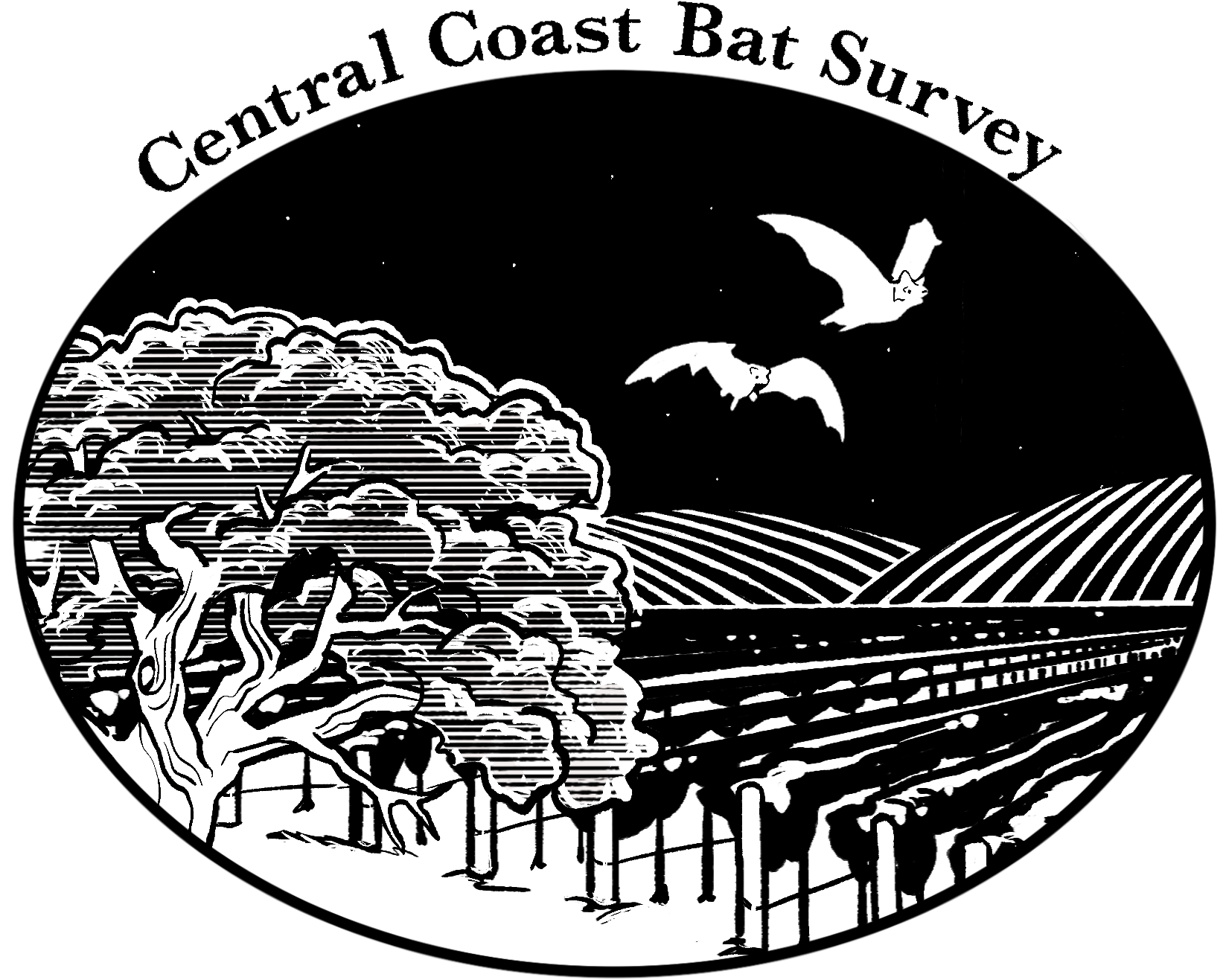Central California Bats and Agriculture
Declines in bat populations in North America could lead to agricultural losses estimated between $15 and $40 billion (or more!) per year. Little is known about Central California’s bats, especially their economic impact on agriculture as well as the effects of the measures that can be taken to ensure their survivorship, including the creation of bat-friendly habitats, reduction of pesticide application, and enhancing structures to foster bat occupancy. The Central California Bat Survey was designed to investigate a poorly studied component of bat ecology – the relationship between Central California bats and agriculture, especially viticulture, and the effects of habitat enhancements on their populations.
One of our Central Coast Bats

The Central California Bat Survey Plan

We hope to add significantly to the understanding of the interconnection between bats and agriculture. Our study has the potential to add substantially, not only to the local knowledge of bats and their benefits to agriculture, but also to the general body of knowledge about bats and agriculture throughout the United States. As the primary research project of the Pacific Coast Conservation Alliance (The PCCA), a 501(c)(3) charitable science/educational organization, the Central California Bat Survey (CCBS) is also timely in that it dovetails with the U.S.D.A. Forest Service’s North American Bat Monitoring Program {“NABat”; N.A. Bat Monitoring program}, which has been designed to promote effective conservation decision-making and the long-term viability of bat populations across the continent.
The CCBS will focus on Central Coast bats using two of the program’s four approaches: mobile acoustic surveys along road transects and acoustic surveys at stationary points, along with several other sampling and monitoring techniques. The PCCA’s bat monitoring program will investigate not only the occurrence and distribution of Central Coast bats, but also the relationship between bats and diverse agricultural practices in the Central Coast region.
Click HERE to view the U.S.D.A Forest Service Bat Monitoring Plan.
Bats And Agriculture – Roost Boxes, Roosting Habitat, and Vineyards; Our Primary Action Item
Bats And Agriculture – Roost Boxes, Roosting Habitat, and Vineyards; Our Primary Action Item
Placing roost structures, as well as creating and installing other bat habitats in and around vineyards, can contribute to the sustainable management of pests (especially insects) and help mitigate habitat loss. Bat condos (similar in function to bird nest boxes; for example, those designed especially for barn owls), diverse wooden structures, and retrofit roosting habitats (e.g., planting of oak trees) can help restore some level of biodiversity in the vineyard landscapes. From the grower’s standpoint, equally important is that bats that take up residence in vineyard-close bat structures and other roost sites devour insects in great quantities, which contributes to a reduced need for chemical-based pest control. Importantly to viticulture, many bat species are known to eat codling moths (Cydia pomonella) and can contribute to its natural biological control. And, of course, bats – especially when a suite of different species is present – eat not only a tremendous volume of moths but also a wide variety of night-active insect pests.
Some other strategies we promote, especially when given the opportunity to design a new vineyard (or even better, to retrofit an old one), are the maintenance or planting of vegetation corridors and stands of trees in the vicinity of vineyards (and orchards) in order to provide roosting sites for bats; these may also benefit predatory birds such as hawks and owls! Other wooden structures can be designed to attract important species, such as the Pallid Bat (Antrozous pallidus). Solitary bats like the red, hoary, and silver-haired bats occupy tree branches and cavities and, along with other bats species (for example, bachelor Yuma bats), may roost under tree bark during the day.
To find out more about our programs, visit the remainder of our website, and please, don’t forget to DONATE to support our long-term research project, the Central California Bat Survey.
